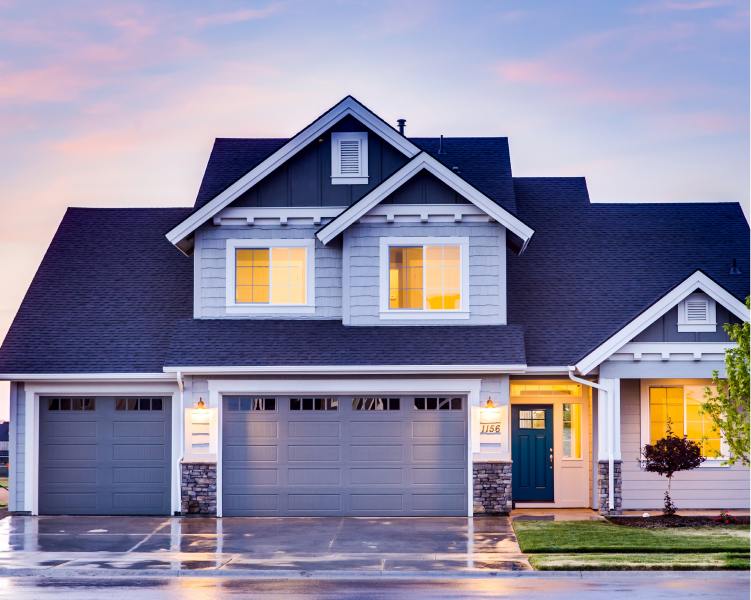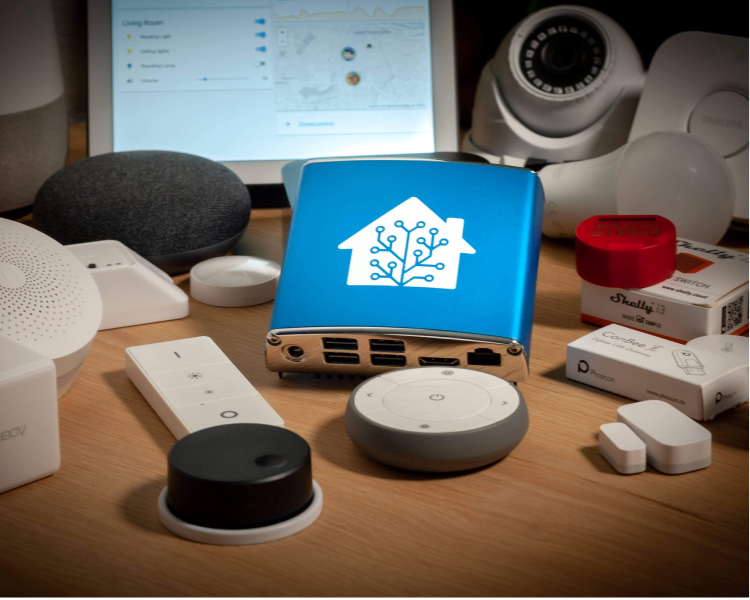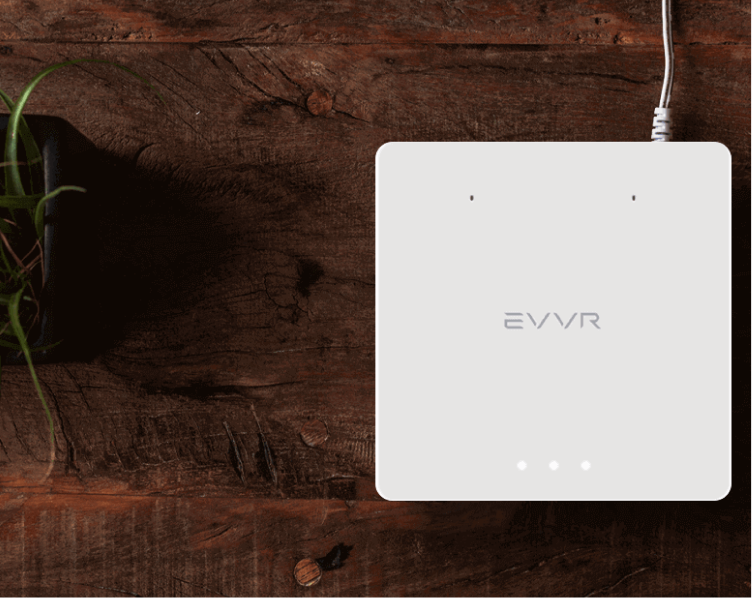You can access and manage your house's appliances from anywhere globally using a mobile device through home automation. Home automation refers to homes where nearly everything—smart light switches, gadgets, outlets, heating, and cooling systems—connects to a remotely controllable network instead of separately programmable gadgets like smart thermostats and garden sprinkler systems.
This includes your alarm system and all of the doors, windows, locks, smoke detectors, security cameras, and other sensors connected to it from the perspective of home security.
EVVR does not need any introduction to smart home gadgets and processes. The EVVR Center Lite is a marvel of engineering that provides central computing for all operations around your smart home. It is light, compatible with a wide range of products and applications, and ahead of time. Make your smart living smarter today!
- Developments in Workflow Automation
- Pros & Cons of Workflow Automation For Smart Homes
- Setting Up Smart Home Automation
- EVVR Center Lite - Trusted Companion To Build A Smart Home
Developments in Workflow Automation
Until recently, only bigger commercial structures and affluent houses had computerized central control of all systems throughout the building. Building automation, which often involves lighting and HVAC systems, rarely offered more complicated management, monitoring, and scheduling features and was only accessible from specific control locations within the building.
The IoT, where everything has an assigned IP address and can be approached and accessed from a distance, is a step toward home automation.
This strategy's earliest and most obvious beneficiaries are smart appliances and devices with Ethernet or WiFi connected to a local area network.
However, businesses have also looked at the potential of IP-based inventory tracking and the integration of electrical systems and even specific points, such as light switches and electrical outlets, into home automation networks.
Although it will be a while before you can use your mobile browser to find a misplaced sock, home networks are becoming more capable of supporting more hardware.

Automation In Operations
Unsurprisingly, one of home automation's two primary qualities is automation. Automation is the capacity to plan and schedule actions for the network's devices.
Time-sensitive commands, such as having your bulbs switch on or off at particular times each day may be included in the programming. It can also include unplanned actions, like turning on your home's lights when your security system goes off.
Once you begin to grasp the potential of home automation scheduling, you may think of countless practical and original ways to improve your life.
Is the light coming in from that west-facing window too much? You may set your motorized blinds to close daily at noon by plugging them into a smart outlet.
Do you have a dog walker who comes by every day simultaneously? You can set up your home automation system so that the front door will be unlocked and locked once more when they arrive.
Remote Control
Remote monitoring and access is the second key feature of modern home automation. While some one-way remote monitoring has been available for a while, the ability to genuinely connect to our home networks while away has only become accessible with the rise of smartphones and tablets.
You may view and operate the system and any related devices using any Internet-connected device with a suitable home automation system.
Monitoring apps can give you a plethora of information about your house, from the current situation to a thorough account of everything that has occurred thus far. In addition to many other things, you may check the state of your home's security system, including whether the lights are on, the doors are secured, and the temperature inside.
You can even access real-time video feeds and watch what's happening in your home while you're gone if your home automation system includes cameras.
Pros & Cons of Workflow Automation For Smart Homes
This section will go through the advantages and shortcomings of workflow automation for smart homes. We will ensure that you clearly understand what it is all about and what to keep in mind before committing to the system.

Pros
Remote Access
Remote gadget control makes it possible to perform things like opening the door for a plant sitter without leaving a key under the doormat.
Comfort
Do you ever discover you left the bathroom light on while cozy in bed? Smart light bulbs allow you to turn them off from the comfort of your couch without removing your plushy mattresses.
Efficiency
How often do you leave the heat on high for eight hours away from home? Prevent energy wastage by scheduling smart appliances like thermostats with home automation. For instance, research indicated that Nest thermostats could save HVAC expenditures by roughly 12%.
Convenience
It is quite easy to schedule gadgets, give voice instructions to operate them, and even sync them with sunrise and sunset. Imagine waking up to freshly toasted bread without pressing a button!
Security
The safety of your house can be increased by various smart security solutions, including sensors for windows and entrances, people-detecting security cameras, and video doorbells that enable you to answer the door from anywhere with an Internet connection.
Cons
Cost
Undoubtedly, IoT gadgets cost more than their non-WiFi-connected equivalents. For instance, the ordinary light bulb costs around $5, whereas the average smart bulb costs roughly $32. Home automation isn't cost you a fortune overall, depending on where you purchase. Of course, you have to consider extra features like remote control, dimming, distinct colors, and voice integrations, to mention a few.
Security Issues
It's unsettling but true: IoT devices may be hacked, including anything connected to the Internet, such as perusing Amazon for a new smartphone or checking in on a motion warning from your smart security camera. IoT device manufacturers from major internet businesses have unfortunately been subject to their fair share of hacking and security lapses; Ring's cameras, for instance, were notoriously breached, allowing the live feeds to be tampered with. Of course, this is a problem you wouldn't have with offline devices, but if you want IoT devices, you'll need to follow some best digital security practices, which are covered later.
Surveillance
Smart security is probably not for you if privacy is a big concern because users can live-stream video from the corresponding app for the camera.
Setting Up Smart Home Automation
It's much simpler to set up your home automation system. You can either wing it and get a smart home product that sounds like it would be right up your alley, such as EVVR Center Lite, or you can deliberately set up your smart home by following these simple steps.
Ecosystem
First, decide which "smart home ecosystem"—most likely Amazon or Google—you want to be a member of. This will determine the voice assistant you employ and which IoT gadgets will function with your system after that. Of course, you may utilize goods compatible with both Alexa and Google Assistant. Still, we advise sticking to one or the other since remembering which voice assistant to use with which IoT device might be a little complicated. Purchase a smart speaker or display compatible with your chosen voice assistant to launch your home automation system.
Protocol
Next, choose a communication protocol for your devices, such as WiFi, Z-Wave, ZigBee, or another. WiFi will be your easiest choice if you're just getting started with a smart home because most IoT devices are WiFi compatible.
Installation of Devices
The IoT devices need to be installed where you want them now. Most Internet of Things (IoT) devices allow for free DIY installation. Be careful to add installation costs, if any, to your budget because certain businesses, like Vivint and ADT, require expert installation for their smart security systems.
Settings Customization
You've researched, bought, and installed your home's IoT gadgets. Next, what? The fun can begin now that you can personalize the gadgets to your taste. For example, place the devices on schedules, lower the lights, or make the devices interact with one another. After we discuss these features in more detail, let's first discuss the IoT products that are now on the market.
EVVR Center Lite - Trusted Companion To Build A Smart Home
Every smart home needs a brain and a computing hub to keep all the devices in the loop. EVVR Center Lite is a trusted partner for smart homeowners who want a hassle-free experience across the board, even with the word "Lite" in its name. EVVR provides its creative web application EVVR Console for users to easily create drivers for Zigbee 3.0 or Z-Wave Plus devices and develop multifunctional plug-ins with EVVR Console. Set up, configure, and manage home automation, easily get devices linked and organize rooms and users. EVVR Console's interface features an advanced, forward-thinking workflow design for a seamless user experience.
It has local storage options and cutting-edge security to cover all bases. The best thing about EVVR Center Lite is that it is compatible with many products and applications available in the market. So, what are you waiting for?












